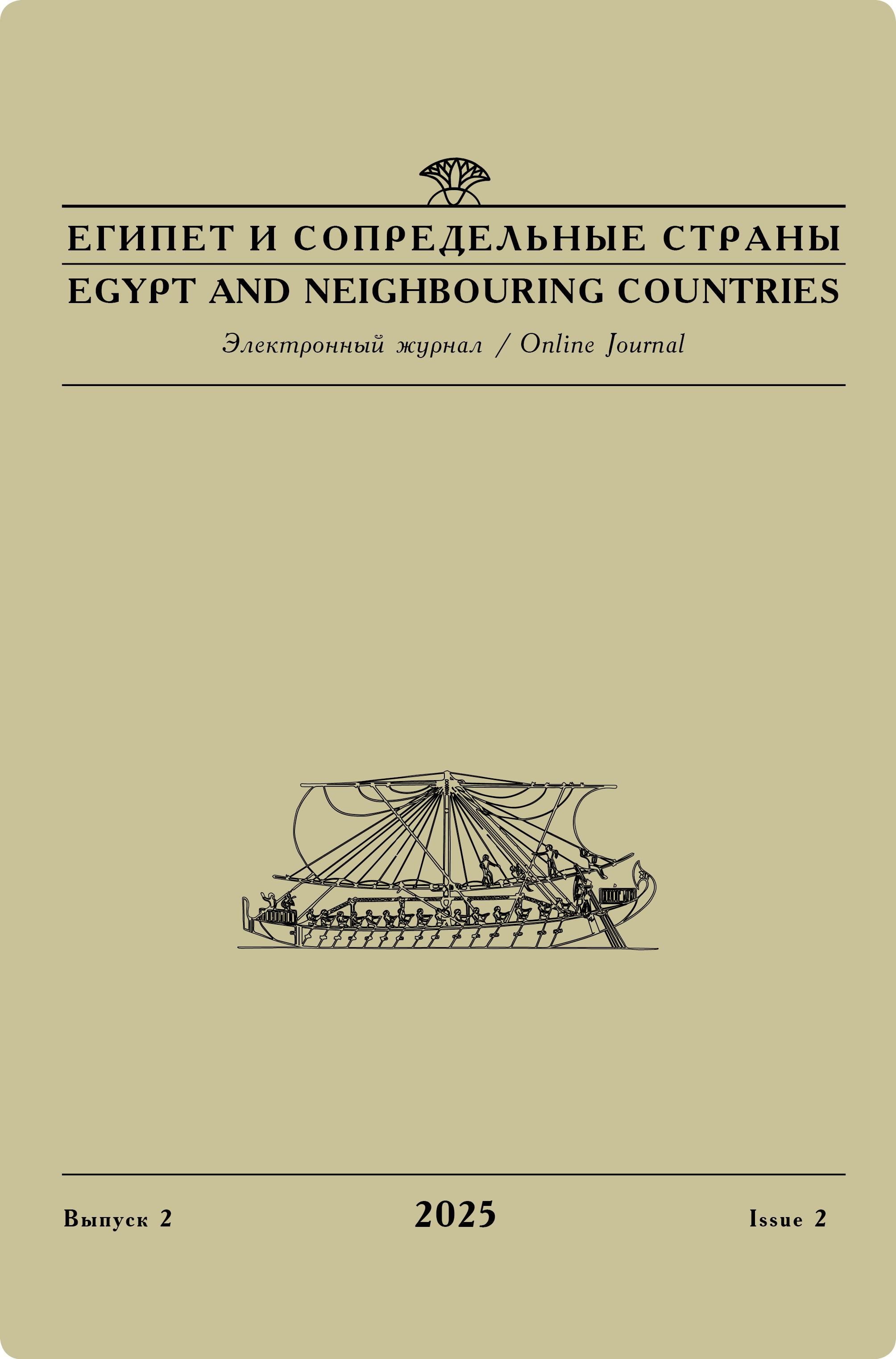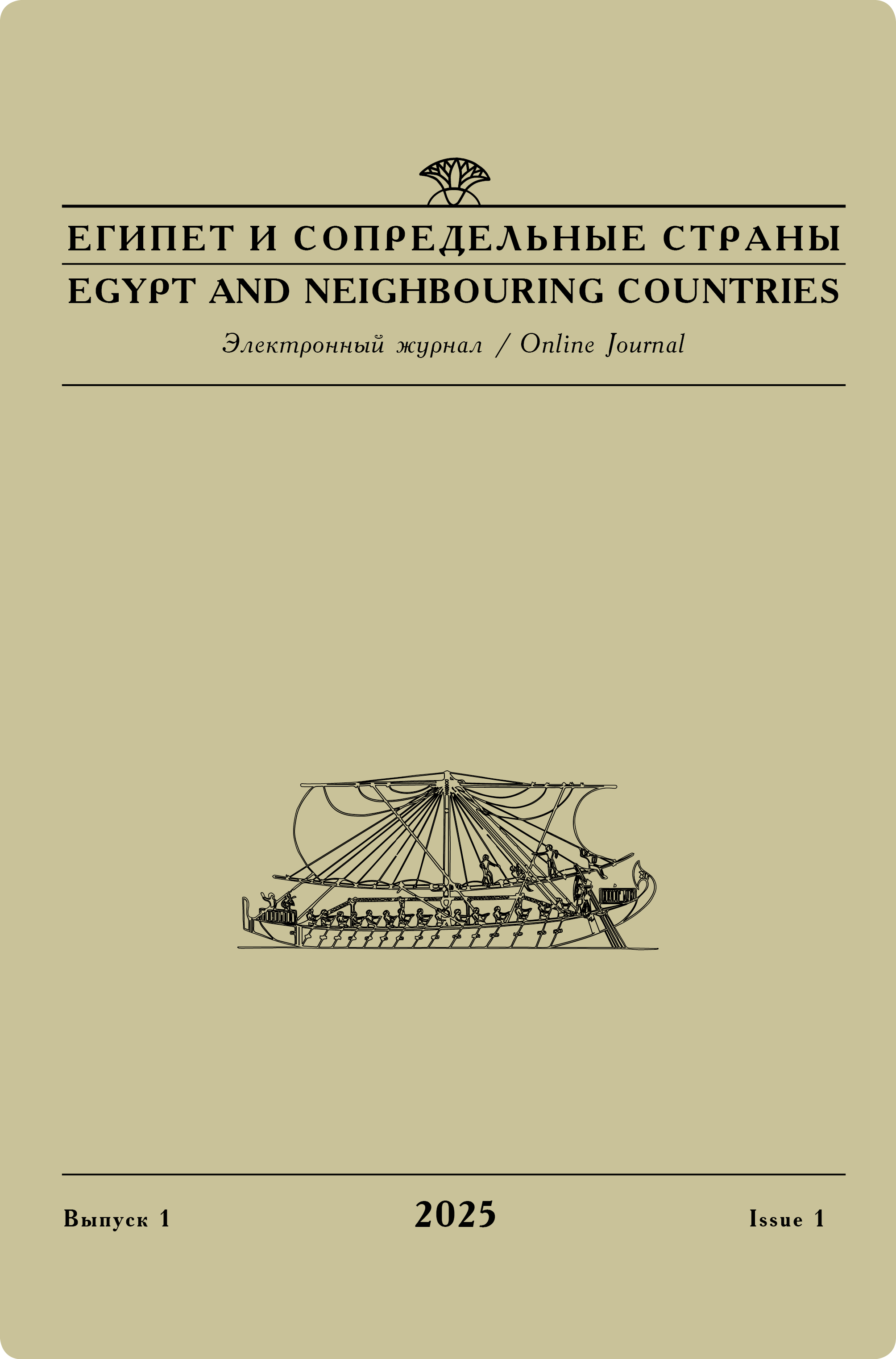Issue 1, 2025
R. Vergnieux, A. A. Belov
Emerging from the Nile’s fog: Forgotten nautical reliefs from the Temple of Aton in Karnak
The 18th Dynasty Temple of Aton in Karnak, constructed under the reign of pharaoh Amenhotep IV — Akhenaton (1352–1336 BC), was built of small stone blocks of standard dimensions (about 52 × 26 × 22 cm) called talatat. After the demolition of the temple at the end of the Amarna period by the successors of Akhenaton, some of these blocks were reused in the foundations of the 9th Pylon of the Karnak Temple. In our days, some 12 thousand of them were extracted from the pylon by the Centre Français d’Étude des Temples de Karnak. They represent a giant archaeological puzzle, and computer-assisted data processing allowed for the restoration of a total of 135 reliefs that once adorned the walls of the proto-Amarnian temple. Among those are 16 painted reliefs referring to nautical contexts that provide valuable information on construction details of large Nilotic freighters, their rigging, crews, and cargo they transported. Their considerable dimensions are hinted at by the volume of this cargo, a sizeable number of through-beams and topping lifts, and large crews manning the vessels. Many scenes represent ships’ manoeuvres and the handling of cargo. In addition to these scenes, several dozens of isolated talatat contain fragments of nautical representations, some of them unprecedented in comparative iconography. Several of the vessels depicted belonged to royal or ceremonial ships. These forgotten reliefs were worked out in high detail with the realism of Amarnian art and deserve to be included in the catalogue of ancient Egyptian river craft.
Keywords:
Ancient Egypt, Akhenaton, iconography, naval architecture, navigation, 3D reconstructions, talatat.
Original language — English.
DOI: 10.24412/2686-9276-2025-00001.
Referring: Vergnieux R., Belov А. Emerging from the Nile’s fog: Forgotten nautical reliefs from the Temple of Aton in Karnak // Egypt and Neighbouring Countries 1 (2025): 3–11. DOI: 10.24412/2686-9276-2025-00001.
Read full article




